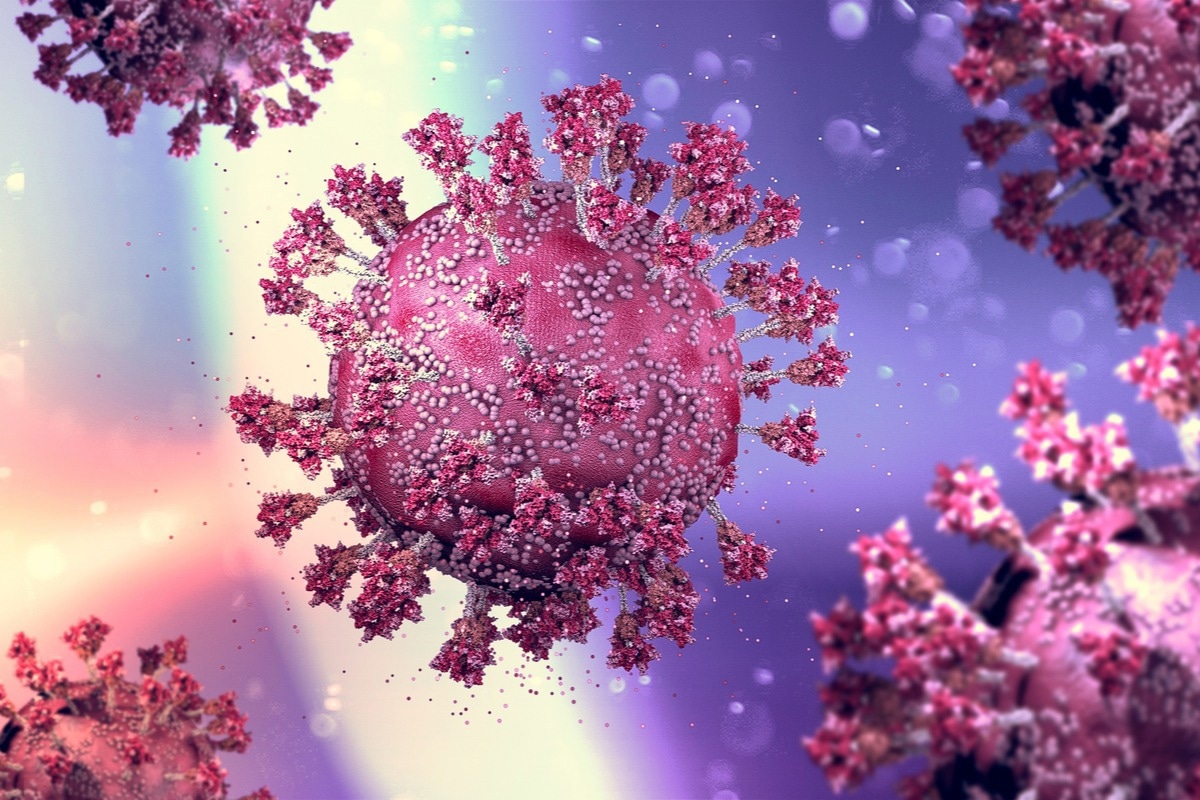The emergence and rapid outbreak of a novel coronavirus, namely, severe acute respiratory syndrome coronavirus-2 (SARS-CoV-2) in China in 2019, caused a global pandemic, which is popularly known as the coronavirus disease 2019 pandemic (COVID-19).
 Study: Potential Autoimmunity Resulting from Molecular Mimicry between SARS-CoV-2 Spike and Human Proteins. Image Credit: Naeblys/Shutterstock
Study: Potential Autoimmunity Resulting from Molecular Mimicry between SARS-CoV-2 Spike and Human Proteins. Image Credit: Naeblys/Shutterstock
Some of the common symptoms of COVID-19 include cough, fever, loss of taste/smell, and shortness of breath. Additionally, many individuals infected with SARS-CoV-2 remain asymptomatic.
However, some COVID-19 patients experience more severe complications including thrombosis, myocarditis, and thrombocytopenia.
Background
Previous studies have shown that SARS-CoV-2 induces a range of antibody responses and also increases levels of autoantibodies that interact with human proteins in severely infected patients. Although the differential levels of disease severity associated with COVID-19 are not well understood, researchers believe it might be related to molecular mimicry.
Molecular mimicry takes place when unrelated proteins contain similar molecular designs. Owing to the shared similarities, these proteins may undergo unexpected interactions. When molecular mimicry of antigens occurs, it elicits the production of antibodies, and in some cases, cross-reactive antibodies might be produced.
Studies have shown that molecular mimicry between the antigen (pathogen) and human proteins can lead to an autoimmune response, where antibodies against the pathogen can function incorrectly and interact against human proteins. This condition might lead to a chronic or transient autoimmune disorder. Prior studies have also reported that molecular mimicry might cause heterologous immunity, i.e., previous exposure to a pathogen antigen may lead to complete or partial immunity, for a long or short term, to a different pathogen with a similar antigen.
The key function of the spike (S) protein of SARS-CoV-2 is penetrating host cells, thereby, causing infection. This protein protrudes from the virus and is a key antigenic protein for the virus. This is the reason why all COVID-19 vaccines and therapeutics have been designed based on the S protein of SARS-CoV-2.
Molecular mimicry between the S protein and human proteins can lead to the production of cross-reactive antibodies in response to COVID-19 infection or vaccination. Scientists stated that cross-reactive antibodies may cause complex outcomes, for example, a manifestation of diverse symptoms with differential severity of the disease across the population.
Scientists believe a better understanding of the autoimmune potential and heterologous immunity through molecular mimicry between S proteins and proteins from pathogens or humans, could help improve COVID-19 treatments and vaccine designs.
A new study
A new study published in Viruses has focused on studying molecular mimicry between the S protein of SARS-CoV-2 and known epitopes, using a computational method. In this study, researchers combined two previously studied methods, i.e., the establishment of molecular mimicry between S and human proteins via sequence similarity based on known epitopes using the Immune Epitope Database (IEBD) and using sequence and structural similarity in general.
In this study, researchers defined molecular mimicry as a molecular match of at least five identical consecutive amino acids present in the S protein of SARS-CoV-2 and a known epitope. Additionally, at least three amino acids must be surface accessible on S and the matched epitope must contain high structural similarities to the corresponding sequence from the Spike. The current study further investigates the autoimmune potential and heterologous immunity which can be applied to future COVID-19 vaccine designs.
Findings
Scientists identified molecular mimicry hotspots in the S region. They revealed the presence of molecular mimics with a high autoimmune potential in clusters within the S protein of SARS-CoV-2. Researchers observed that some clusters contained many molecular mimics whose motifs are found in human proteins. Molecular mimics present in the α-helices exhibited higher structural similarity based on the normal conformation of the helix. Additionally, molecular mimics in coil regions showed marked similarities.
Researchers reported that a TQLPP motif (coil region) in the Spike and thrombopoietin protein shares similar antibody binding properties. The finding of the study related to the TQLPP motif indicated significant potential for cross-reactivity between Spike and hTPO due to molecular mimicry, and this may affect platelet production and cause thrombocytopenia. In silico studies also predicted cross-reactivity with other TQLPP-containing proteins (e.g., NEK10), which requires in vivo validation.
The authors stated that on rare occasions COVID-19 vaccines cause thrombocytopenia and there was a possibility that cross-reactivity could titrate the serum concentration of free hTPO. Although current vaccines remain effective and safe, researchers stated that protein engineering of the TQLPP motif and the NTD (N-terminus domain of S1 subunit) supersite could be used for future COVID-19 vaccines. There is a high possibility that the new vaccine could provide improved long-term protection against SARS-CoV-2 variants and reduce the risk of thrombocytopenia.
The current study has also shed light on cross-reactivity facilitated through the ELDKY (α-helices) motif between the S domain and PRKG1, TPM1, and TPM3. Researchers stated that PRKG1 is connected with cardiac complications and blood clotting disorders.
Conclusion
The authors reported two epitopes, namely, the TQLPP motif and ELDKY motif, to be associated with molecular mimicry in SARS-CoV-2. This computational study provides insights into the autoimmune potential of SARS-CoV-2 (pathogen) for therapeutic intervention or vaccine design, to avoid any autoimmune interference.